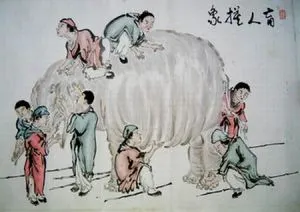If cooperative push hands is all it takes to cultivate the 'skill' demonstrated in the videos windwalker posted, it stands to reason that it would be more widely understood among taiji people the same way the physical aspects of the art are understood and often discussed in a lively manner.
In trying to answer the questions windwalker has asked, and in light of no answers being offered thus far in this thread (aside from Wing Woo Gar's replies to others), I thought it might be helpful to approach the topic from a direction that allows common experiences to be examined on the level of every day interactions, or at least something that could be isolated for the purpose of experimentation as a training exercise.
The questions themselves bring about a bit of introspection on what is happening, and why it's expressed differently by the teacher and the student, as noted by windwalker

